All Posts

On September 10, 2001, I was attending a law enforcement conference in Atlantic City, NJ. While I have attended hundreds of similar meetings, this conference stands out for several reasons. First, and most obvious, it was the eve of the day where most of our lives were indelibly altered. Second,
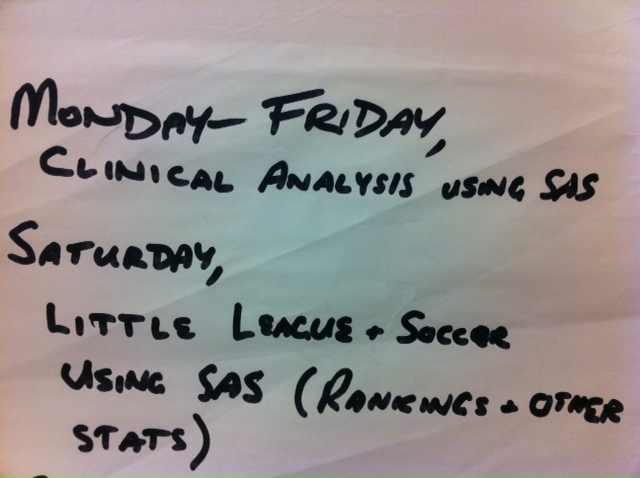
Now this is the way you sports fans should be thinking of using SAS! Of course there are no real specifics here, but you guys are pretty smart. Here's an older story about using SAS for sports, and I'm sure you've all seen Money Ball by now. Today's series entrant is

This blog post is a "mashup" of a couple of my previous posts, combining the lessons to create something brand new that I hope you will find useful. First, let's review what we know: SAS Enterprise Guide supports a scriptable object model, which allows you to write scripts or programs

We'll interrupt the series on Why Forecasts are Wrong, with a report from the inaugural Analytics 2011 conference, held last week in Orlando. A2011 drew over 1025 attendees (from 44 states and over 25 counties). The Analytics conference series features a wide range of topics (including forecasting, optimization, data mining, text
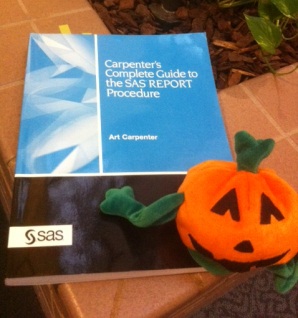
This week's featured tip is from master SAS user Art Carpenter and his classic book Carpenter's Complete Guide to the SAS REPORT Procedure. In his review for the book, Rick Mitchell-senior systems analyst at Westat-said "I am green with envy for the newest generation of SAS programmers because I wish that I had had this book in
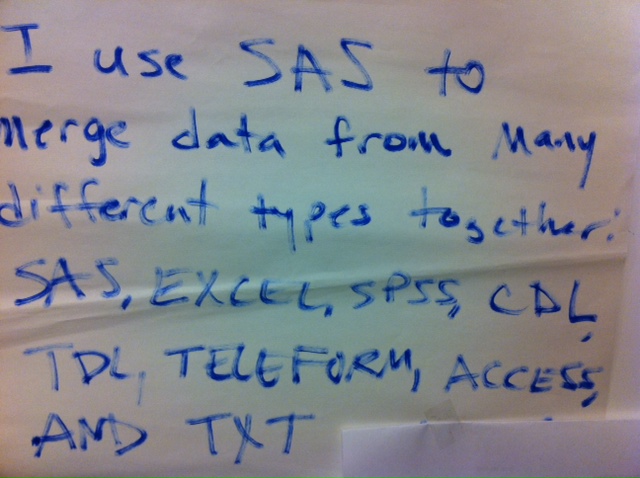
Writing is usually very easy for me - I close the door and concentrate on the task at hand. But today, my mind is wandering. Maybe it's the changing season (it's fall in the US) that makes me think of all of the SAS users who might be reading my posts:
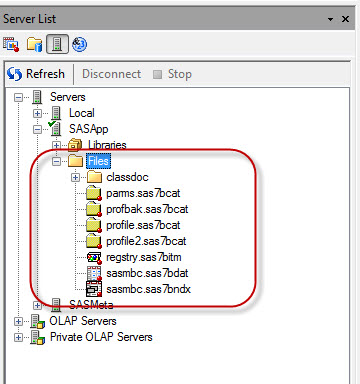
Years ago and a seemingly far galaxy away, I wrote about how to modify 9.1.3 to start Enterprise Guide users in a different location for the File folder. By default, the user only can access their personal SAS Temporary File. Why change this? I would prefer to use a central

For the past year, I’ve had the pleasure of serving on the communications team of the National Collaborative for Bio-Preparedness (NCB-P), of which SAS is a partner and the analytics provider. That experience was heavy on my mind as I recently watched the film Contagion. I may drop some minor

“I really wish someone had shown me this function in SAS sooner, because it’s saved me a ton of time and effort,” said Brandi Rhoads as she opened her presentation at the Western Users of SAS Software (WUSS) conference in San Francisco.

I've been very fortunate to meet a lot of SAS users during my scant 3 year tour at SAS. I've met them while attending SAS Global Forum 2009, 2010, and 2011; NESUG 2009, 2010 and 2011; and SESUG 2010. Of course, like you, I want to go to all of the
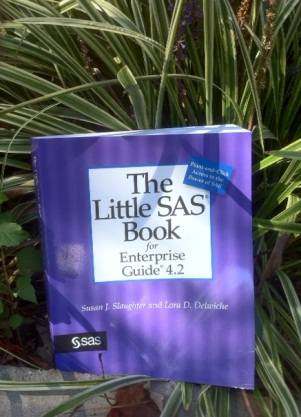
Super authors Susan Slaughter and Lora Delwiche and their bestselling Little SAS Book series have empowered the user community for years. This dynamic duo has uncannily anticipated what SAS users need to know. And they've produced thoughtful and accessible books with remarkable speed. One of their most recent books The Little SAS Book for Enterprise Guide 4.2 provides

This week brought big news of one of the most cruel and heartless tyrants of the 21st century. This man is known for narcissistic behavior, surrounding himself with a cadre of beautiful women, sleeping in a different place every night, picking new favorites each week, and bringing tears and untold suffering

In my Friday series about innovation, I've decided to include some personal stories of unusual and unique uses of SAS. Once a month or so, I'll swap out the Post-it Notes for a profile of someone who has used SAS in an innovative way to solve a problem or, like

Halloween is around the corner and children everywhere will wear masks throughout their neighborhoods for a night of trick-or-treating fun and, likely, too much candy. A masking has also occurred in education policy with the No Child Left Behind Act, sans the candy at the end of the night. That

Two weeks ago I had the pleasure of reading Tom Wallace's new book, Sales & Operations Planning: Beyond the Basics. This is not an introductory "how to" book -- Tom and Bob Stahl have already written those -- but instead covers nine major companies that have implemented (and extended!) S&OP








